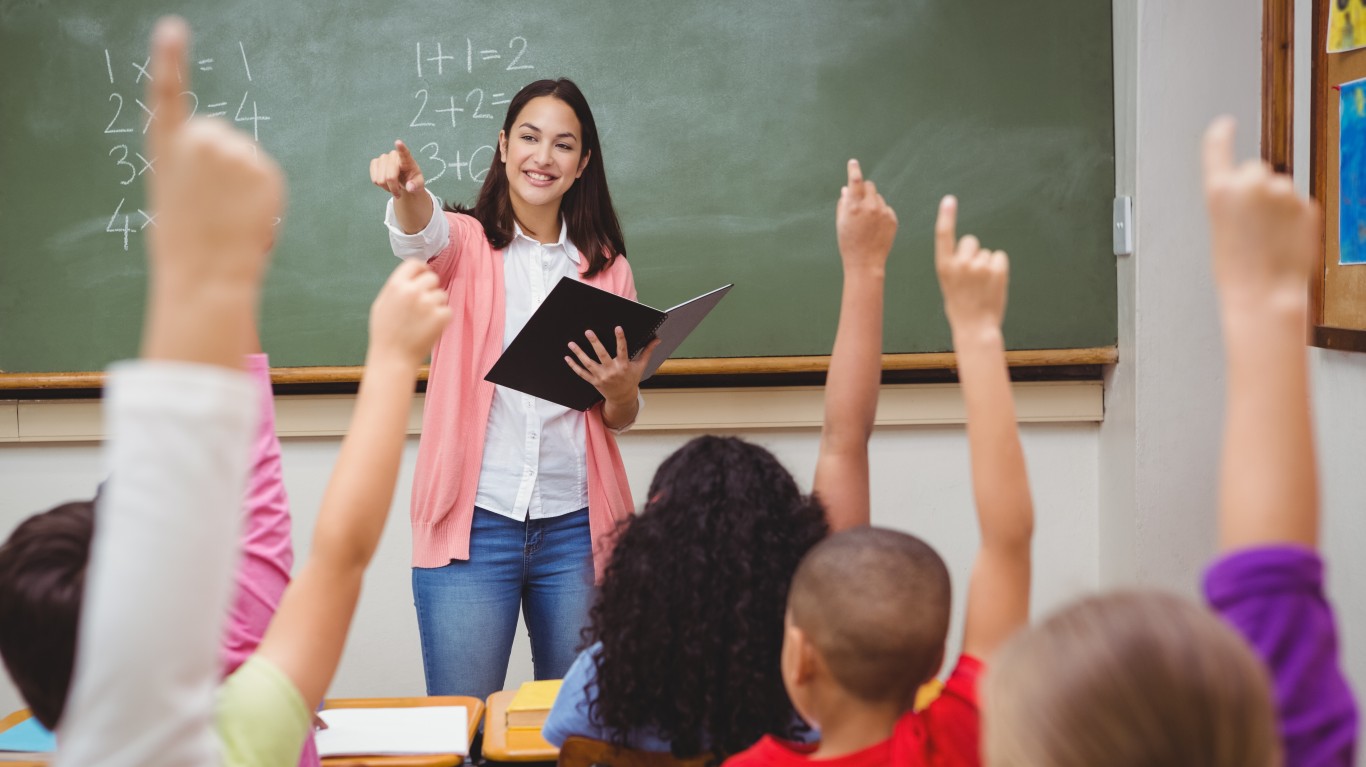Retail
US Consumers Spending Big as Back-to-School Season Ramps Up

Published:
Last Updated:

U.S. consumers have been spending more freely this year, thanks in part to rising paychecks and plentiful jobs. According to Census Bureau data published Tuesday, total spending on retail and food services rose by 2.9% in the first six months of 2019, compared with the same period last year.
A new estimate by retail research firm Customer Growth Partners puts total retail spending (excluding autos, gasoline, food services and home improvement) at $616 billion, according to a report at Bloomberg. That’s a year-over-year jump of 5.1%. A significant portion of that spending will be directed at getting kids ready for a new school year.
The National Retail Federation (NRF) on Tuesday projected back-to-school spending for K-12 students would reach $26.2 billion. The NRF also estimates that spending on college students will total $54.5 billion for the back-to-school season. The NRF total of $80.7 billion for K-12 and college spending represents more than 13% of all spending in the months of July and August.
The less-good news for retailers is that the NRF’s projected spending for this year, though higher on a per-student basis, is lower overall due to fewer children attending school or college. Spending last year was estimated at $82.8 billion.
On a per-pupil basis, the NRF forecasts K-12 spending at an average of $696.70 per student, up from $684.79 in 2018 and a new per-student record, topping the $688.62 average posted in 2012. Spending on college students is also forecast to post a new record high of $976.78 per student, up from $942.17 last year and a previous record of $969.88 set in 2017.
Customer Growth Partners believes that online sales will grow by nearly 12% in 2019, while sales at club and big-box stores will rise by 5.5%. Sales of health and personal care products are forecast to rise by 4.7%, and spending on clothes will rise by 0.7%. Spending on consumer electronics is expected to decline by 2.5%.
The NRF estimates that spending on electronic gear for K-12 students will rise from an average of $187.10 in 2018 to $203.44 this year. Spending on clothes and accessories is forecast to average $239.82 this year, down slightly from an average of $236.90 last year.
Among college students, spending on electronics is expected to rise from $229.21 a year ago to $234.69 this year. Spending on clothes is forecast to drop from $153.32 to $148.54.
K-12 families plan to do most of their shopping at department stores (53%), with discount stores (50%), online (49%), clothing stores (45%) and office supply stores (31%) trailing behind. Families with college-age students plan to do most of their shopping online (45%), followed by department stores (39%), discount stores (36%), college bookstores (32%) and office supply stores (29%).
The last few years made people forget how much banks and CD’s can pay. Meanwhile, interest rates have spiked and many can afford to pay you much more, but most are keeping yields low and hoping you won’t notice.
But there is good news. To win qualified customers, some accounts are paying almost 10x the national average! That’s an incredible way to keep your money safe and earn more at the same time. Our top pick for high yield savings accounts includes other benefits as well. You can earn up to 3.80% with a Checking & Savings Account today Sign up and get up to $300 with direct deposit. No account fees. FDIC Insured.
Click here to see how much more you could be earning on your savings today. It takes just a few minutes to open an account to make your money work for you.
Thank you for reading! Have some feedback for us?
Contact the 24/7 Wall St. editorial team.